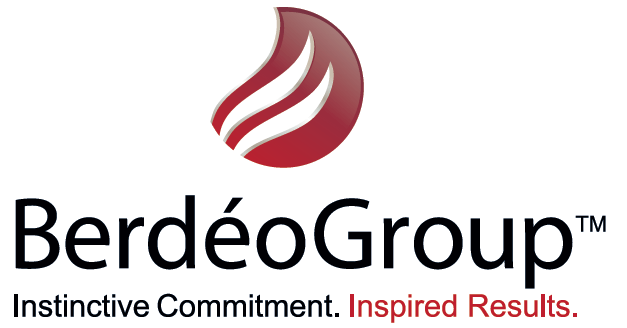Do you know that person who can walk into any room and seamlessly converse with others, regardless of their background? That individual likely has a high social intelligence. Arguably more important than a high IQ, social intelligence largely determines the quality of our relationships and is essential to our success.
As a driver of our capacity to be empathetic and assertive in our interactions, social intelligence is inextricably linked to emotional and somatic intelligence. These two other competencies shape human behavior. (Note: if you are joining me in this series now, I encourage you to read my articles on emotional and somatic intelligence.)
The importance of forming solid relationships at work cannot be understated – your professional achievement and that of ‘ ‘your organization truly depends on it. From greater creativity and innovation to more effective decision-making, those who take the time to cultivate relationships reap the benefits. Moreover, beyond the business, strong connections promote inner happiness and fulfillment.
In his book, The Leaders Brain, Michael Platt examines the social brain network–an interconnected set of brain areas that is the driver of all social interactions. Unlike somatic intelligence, social intelligence is not embedded in our inherent physical nature – it is wired over many years through repeated interactions. Even Oprah ‘wasn’t a natural social prodigy – that couch was her teacher. You, too, can grow this vital muscle.
Want to cultivate the capacity to engage with anyone effortlessly? Here are six proven ways to increase your social intelligence:
- Pay attention to sensory cues. Often, ‘people’s body language will tell us a great deal about how they are feeling, even if they ‘aren’t saying so. Try to tune in to what the other person is saying ”’physically’ as well as in their tone. And how are they presenting temselves. If they slouch and appear physicallyninterested during a conversation, it may make the speaker lose confidence in what they are saying, resulting in a negative interaction.
- Start a mindfulness practice. Get into the habit of taking ten deep breaths before every meeting. Focusing on the breath is a powerful way to reset the rhythm of your body and, thus mind. Ten focused breaths are all it takes to ready yourself for the next task, refreshed and productive.
- Set aside judgments. In the past, if I had a nickel for every time I evaluated how others dressed, spoke, whether what they said was right or wrong, and compared myself to them, I might just be retired by now. Feeding into this negative loop is the biggest derailer to social intelligence, as it limits your attentiveness and capacity to empathize with others. When we judge others, we are also multitasking. And it has been proven countless times that humans are horrible multitaskers. You also are missing so much helpful information that you could use to make better decisions and solve many problems more effectively. So, the next time a judgmental thought pops up, observe your mind as a spectator. You will soon learn you can fly up the ranks faster without thinking about comparison or competition.
- Look others in the eye. If direct eye contact is challenging for you, I urge you to start building your comfort level with it. A key aspect of high social intelligence, we can gauge what another is feeling by looking into the proverbial “”window to their soul”.” Test your eye contact efficacy by taking this quiz, The University of Cambridge, Reading the Mind in the Eye’s. The National Institute for Physiological Sciences in Japan determined eye contact prepares the brain to understand the intentions and actions of others. Are you ever on the receiving end of a conversation in which the other person’s eyes are wandering? Though this behavior can be a valuable way for people to visualize what is being said, what you are seeing when you look away can distract you. The listener is at least subliminally aware you are not invested in the conversation. Practice repeatedly returning to a constant point of focus: the other ‘person’s eyes. By engaging the eyes, you also will have more influence on the outcomes and essence of your conversation and absorb more of what they say.
- Value ‘others’ perspectives. Integral to effective leadership is the capacity to empathize with others. This skill may take more time to develop. Start by focusing your energy on listening to connect. Invite healthy discourse by asking questions to explore possibilities, not to confirm you are right. Ask clarifying questions like, “Can you expand on your idea?” versus “Why would you attack it from that angle”?” To truly walk away with deeper insight, ask yourself questions like, What are they trying to say? What are they thinking? And what are they hoping to explore?
- Ask for feedback. Seeking your ‘colleagues’ insights into your communication could illuminate some blind spots for you to home in on. Be sure to gain various perspectives from individuals you feel will be transparent with you, from different tiers of the company–at least one peer, boss, and direct report. Share with them, “”These are the areas ‘I’m working on. What are some with which you concur and might add”?” It is an excellent practice in humility that lends to personal growth, greater trust and transparency with others, and, ultimately, enhanced interpersonal relationships.
- Practice mirroring others. Remember when you were a kid and would play copycat, mirroring the movements of your friends and parents? Practice a very watered-down version of this game with others by mirroring gestures or emotional responses. Doing so signals you understand and connect with them, enhancing the perception of your deference.
Think of your ability to connect with others like a muscle. The more you use it, the stronger you will invariably grow in your interactions with others. So, be patient with yourself as you experience inevitable growing pains along the way. They are all just a part of the process.
If you want to expand your knowledge in this area, I highly recommend Michael Platt’s book, The Leader’s Brain.





